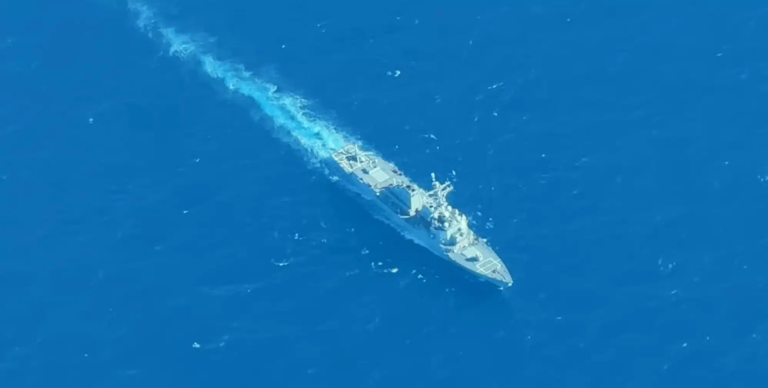
Taiwan is planning to test a home-made kamikaze sea drone later this month as it seeks to boost its naval defences in the face of growing pressure from mainland China.
The vessel – developed under the code name “Kuai Chi Project” by the National Chung-Shan Institute of Science and Technology (NCSIST), Taiwan’s top weapons developer – will undergo combat capability evaluations later this month before further tests later this year, a military source said on Monday.
“If all goes according to plan, the boat will proceed to live combat testing during a precision missile drill in southern Taiwan this August,” the source said, speaking on condition of anonymity.
The island’s defence ministry has allocated more than NT$800 million (US$25 million) for the project, commissioning NCSIST to lead development. Lungteh Shipbuilding Company was awarded the contract last year to construct three attack uncrewed surface vessels (USVs) and one target boat.
NCSIST aims to complete all required testing by the end of this year, with mass production expected to begin in 2026. “Under the current plan, the army intends to acquire more than 200 of these vessels to support coastal assault operations,” the source said.
Procurement documents show that the attack vessel will measure under 10 metres (32.8ft) in length, displace less than four tonnes when fully loaded, and have a draft of less than 0.5 metres. The target work boat will be under 17 metres in length, with a displacement of 19 to 20 tonnes and a draft of less than 0.75 metres.
Each attack vessel will be equipped with an AI-enabled targeting and guidance system, capable of autonomously locking onto and striking enemy ships after target assignment. “Range, precision, mobility, unmanned capability, and AI integration are the core elements of Taiwan’s asymmetric defense strategy – and building 200 units is just the beginning,” the source added.
In parallel with the Kuai Chi Project, NCSIST will also host a two-day demonstration event on June 17–18 off the coast of Suao in northeastern Yilan County, showcasing both static and live displays of USVs. The goal is to present unmanned maritime platforms tailored for a variety of missions, including attack, patrol, search and rescue, environmental monitoring and logistics, according to the defence ministry.
In a news conference last week, the ministry said the event would feature contributions from seven domestic and five US companies. Four Taiwanese firms – Thunder Tiger Technologies, Carbon-Based Technology, Corum Yachts International and Lungteh Shipbuilding will be involved in live demonstrations at sea.
These tests will include elements such as electro-optical imaging, sailing speed, remote control range, land transportability, seaworthiness, payload capacity, communications security, hull design and material characteristics.
Notably absent from the event will be the Endeavour Manta military USV, unveiled by CSBC Corporation Taiwan in March, as well as NCSIST’s Kuai Chi attack boat.
According to NCSIST, the demonstration is not intended to showcase its classified combat USVs but to offer government agencies a chance to assess available commercial and dual-use technologies. Sun Chun-ching, an official from NCSIST’s Systems Development Centre, told reporters last week that the Kuai Chi drone boat will remain under wraps due to its sensitive nature. “If it passes all evaluations successfully, it may be revealed at the Taipei Aerospace and Defense Technology Exhibition in September,” he said.
Beijing views Taiwan as part of its territory and has not ruled out the use of force to reunify it with mainland China.
Most countries – including the United States, Taipei’s main international partner – do not recognise the island as an independent state, but Washington opposes any attempt to take Taiwan by force and is legally bound to provide it with arms to defend itself.





